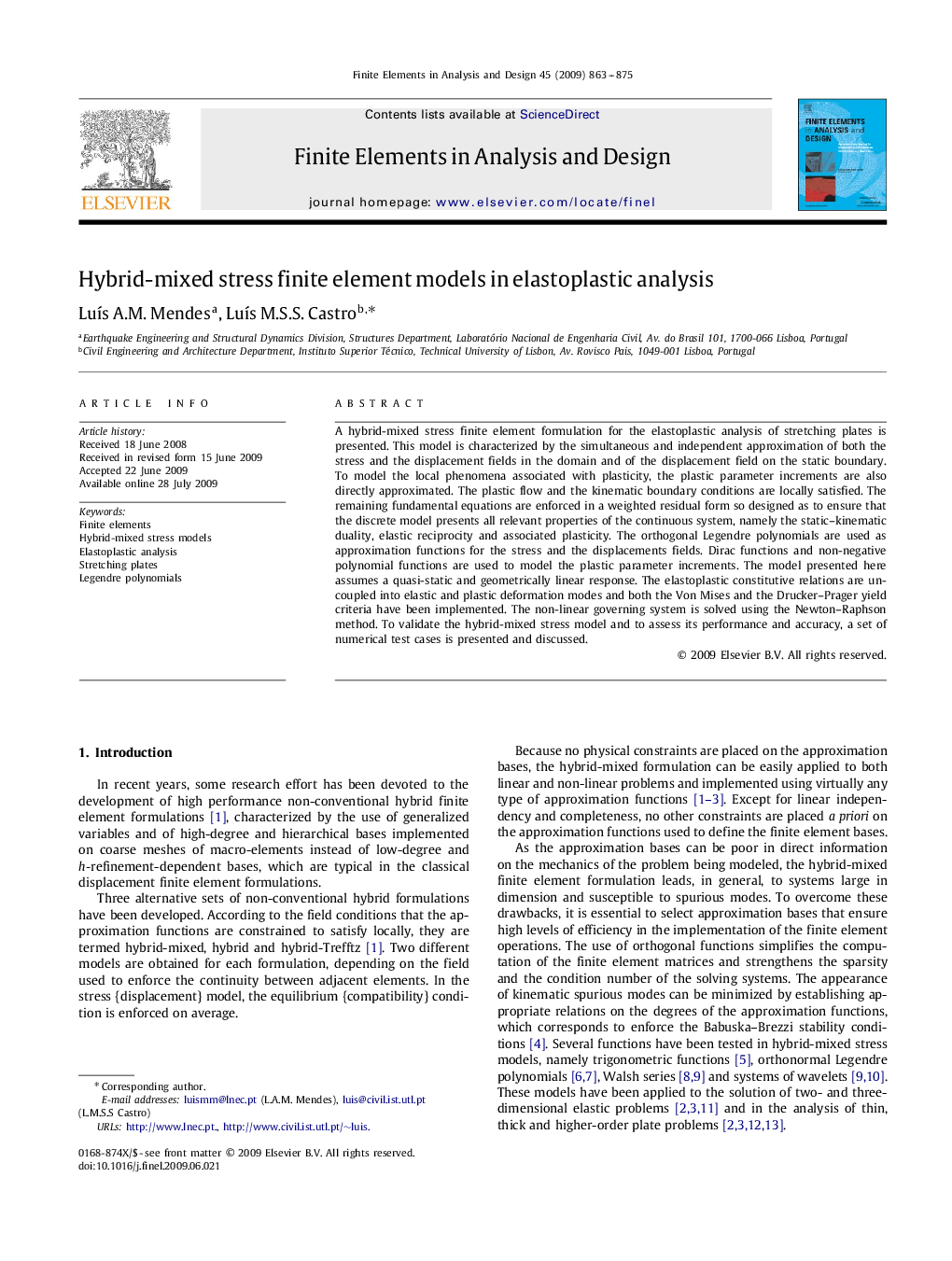| Article ID | Journal | Published Year | Pages | File Type |
|---|---|---|---|---|
| 514746 | Finite Elements in Analysis and Design | 2009 | 13 Pages |
A hybrid-mixed stress finite element formulation for the elastoplastic analysis of stretching plates is presented. This model is characterized by the simultaneous and independent approximation of both the stress and the displacement fields in the domain and of the displacement field on the static boundary. To model the local phenomena associated with plasticity, the plastic parameter increments are also directly approximated. The plastic flow and the kinematic boundary conditions are locally satisfied. The remaining fundamental equations are enforced in a weighted residual form so designed as to ensure that the discrete model presents all relevant properties of the continuous system, namely the static–kinematic duality, elastic reciprocity and associated plasticity. The orthogonal Legendre polynomials are used as approximation functions for the stress and the displacements fields. Dirac functions and non-negative polynomial functions are used to model the plastic parameter increments. The model presented here assumes a quasi-static and geometrically linear response. The elastoplastic constitutive relations are uncoupled into elastic and plastic deformation modes and both the Von Mises and the Drucker–Prager yield criteria have been implemented. The non-linear governing system is solved using the Newton–Raphson method. To validate the hybrid-mixed stress model and to assess its performance and accuracy, a set of numerical test cases is presented and discussed.
